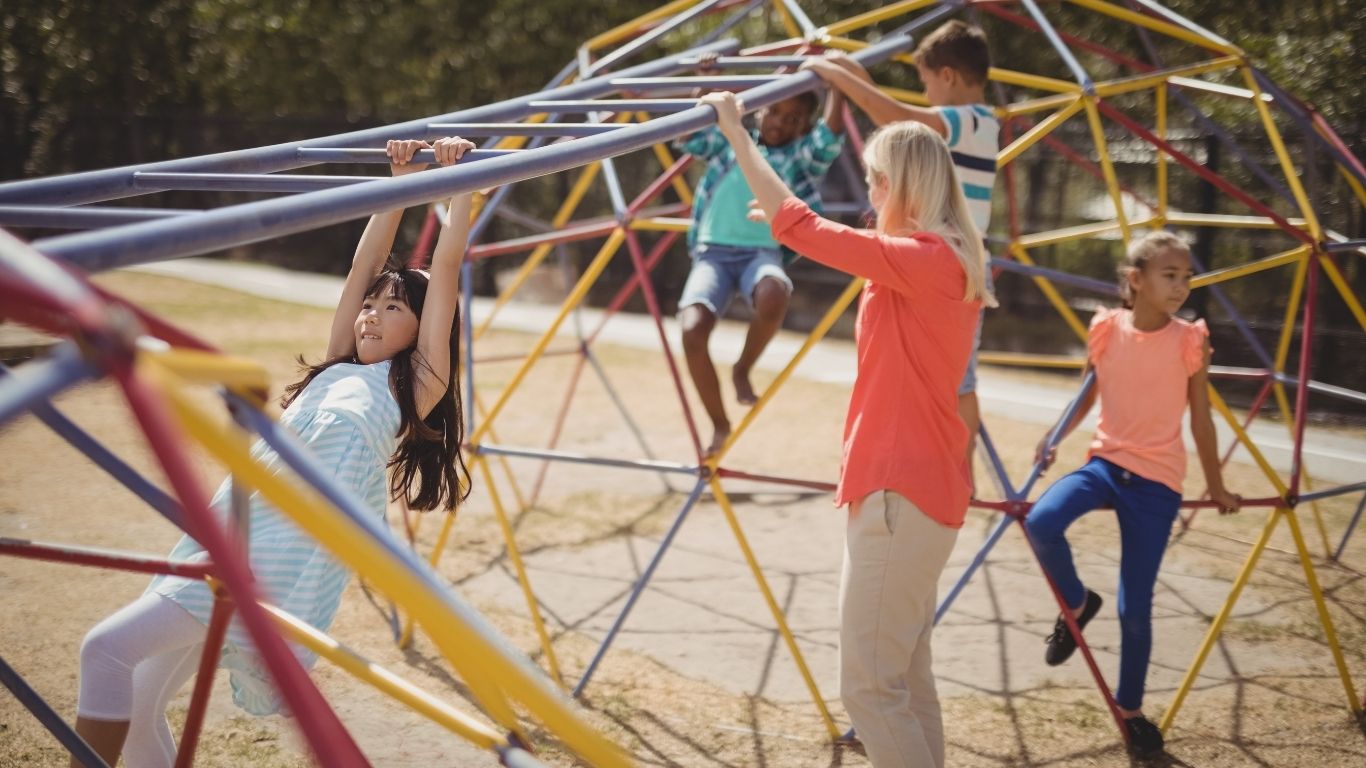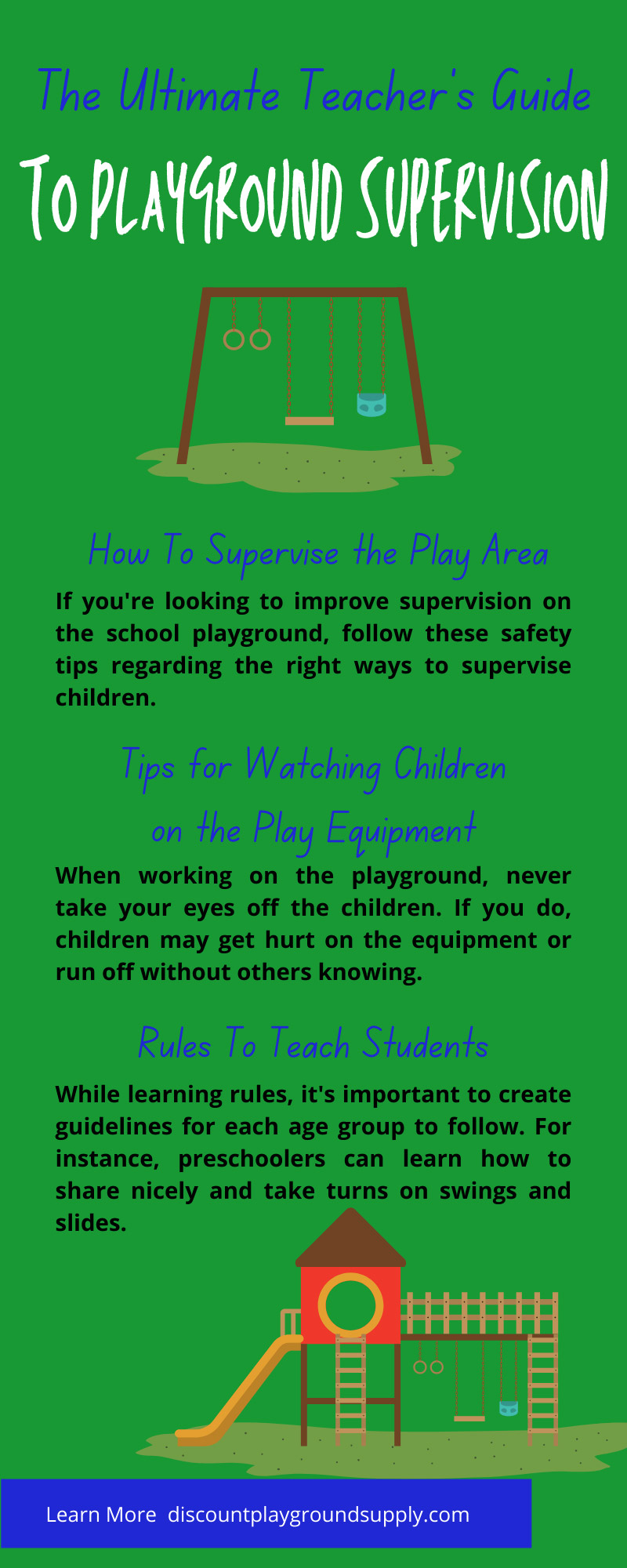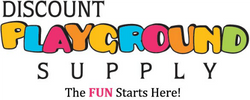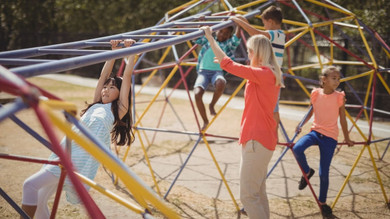
Many children can become involved in serious accidents on the playground. However, with the right tools to teach students how to play outside, everyone can have a safe day of play. While reviewing this teacher's guide to playground supervision, try and decide how you want to tackle each staff meeting with new insights on supervising children while playing at the park so that everyone can have a successful recess in school.
Why School Playground Guidelines Are Important
In order for students to explore and learn what boundaries are and how to test them, they need to know the rules when it comes to playing outside.
When schools create rules, it helps encourage students to report bullying and other harmful activities, such as kicking or walking on the slide. Children are supposed to explore their limits, and without them, there's no way for them to know right from wrong.
Additionally, setting rules and guidelines can help students learn what's expected of them when at play.
Behaviors Staff Should Encourage in Children
While figuring out the best rules for the play area, try and map out the types of positive behavior you'd like kids to learn from your rules.
For instance, if you want children to build trust and open up, set up a rule that has them go to a staff member for reporting bad behavior; this allows children to open up and learn to trust.
Not only that, but kids feel safer when they can practice effective communication skills.
Collaboration and conflict are two gray areas you may not touch on right away until you see kids arguing over who goes next on the swings. When you have rules in place, you want there to be an open space for children to communicate freely, but no name-calling.
So, if a child has difficulty sharing or taking turns, set up a rule where they go to a teacher to talk about their problem. By talking out issues with students, you help make the playground a more welcoming environment for all.
Many children quickly learn that they like to play with specific groups. For collaboration, however, it can be tricky. It's better to demonstrate a rule where if everyone wants to play a game, all children need to come together to play.
How To Supervise the Play Area
If you're looking to improve supervision on the school playground, follow these safety tips regarding the right ways to supervise children.
Always Be Watching
Don't ever take your eyes off of the play area, especially if the school doesn't have a gate around the space. By watching, you're able to catch when a child breaks a rule, hurts themselves, or argues with a classmate.
Stay Off the Phone
No matter what you're doing, it's essential to not use your phone while watching students outside. When setting up expectations for staff members, incorporate a zero-tolerance policy for cellphones, and let your staff know that bad things can happen if they are always on their phones.
Set Up Surveillance Zones
For every child playing, you should have at least two to three adults watching children at all times. Having different employees on different sides of the park or playground helps them watch for rulebreakers and inspect the equipment before allowing kids to play.
Tips for Watching Children on the Play Equipment
When working on the playground, never take your eyes off the children. If you do, children may get hurt on the equipment or run off without others knowing.
So, keep a close eye on all of them, and follow these tips for effectively watching students on play equipment.
- Children must wear the right shoes.
- Ensure that the playground surfacing isn't scattered and that it's either mulch, sand, rubber surfacing, or pea gravel.
- Section off areas for all ages; that way, no one is on equipment that's not meant for their age group.
How To Inspect Playground Equipment
When inspecting any part of the playground, there are specific things to look for to prevent playground injuries and particular ways you need to perform equipment checks.
As you make your way over to the play area, review all procedures with staff and ensure they follow manufacturers' instructions and your guidelines.
How To Inspect Gear
The first thing to do is head to the playground and analyze every part of the play area. Make notes of any issues that need fixing and close the area for the day so your workers can fix the problems to ensure students’ safety.
Additionally, if you have newer additions to the playground, such as a plastic gaga ball pit, it's essential to check for any damage. If something breaks, order a new part right away and set up signs to show that part of the playground is closed until it gets fixed.
Daily Safety Checklist for the Playground
It's important not to let any play gear go unchecked. Maintenance crews should check the equipment and clean the area weekly.
Checking the swings, slides, surface areas, and more are a few things you should never neglect to check.
- Check the equipment for cracks, bends, warps, rust, or breakage.
- Fasten and tighten loose bolts, especially the swings.
- Clear off the surface area with a rake.
- Inspect the grounds for any potential flooding.
Rules To Teach Students
Like with lessons in the classroom, teachers can teach students about playground safety. While learning rules, it's important to create guidelines for each age group to follow. For instance, preschoolers can learn how to share nicely and take turns on swings and slides. On the other hand, between the ages of 7 and 10, older children can learn how to test boundaries and explore their senses.
Some rules for students to consider include:
- Being patient while waiting for their turn
- Asking an adult for help in an argument
- Taking a break when they feel angry
As you learn from our ultimate teacher's guide to playground supervision, you now have a better way to discuss the importance of watching children 24/7 on the playground to ensure their safety.
Learning from this guide has helped you improve the way you and your staff maintain the playground and ensure every child learns how to play on the playground safely.
Discount Playground Supply has supported many school administrators and their staff in learning the best ways to supervise students on the playground and maintain play equipment. As you know how to manage students better, don't forget to purchase kits, tools, and playground equipment to help students stay safe at the park and for your staff to learn how to maintain gear.


